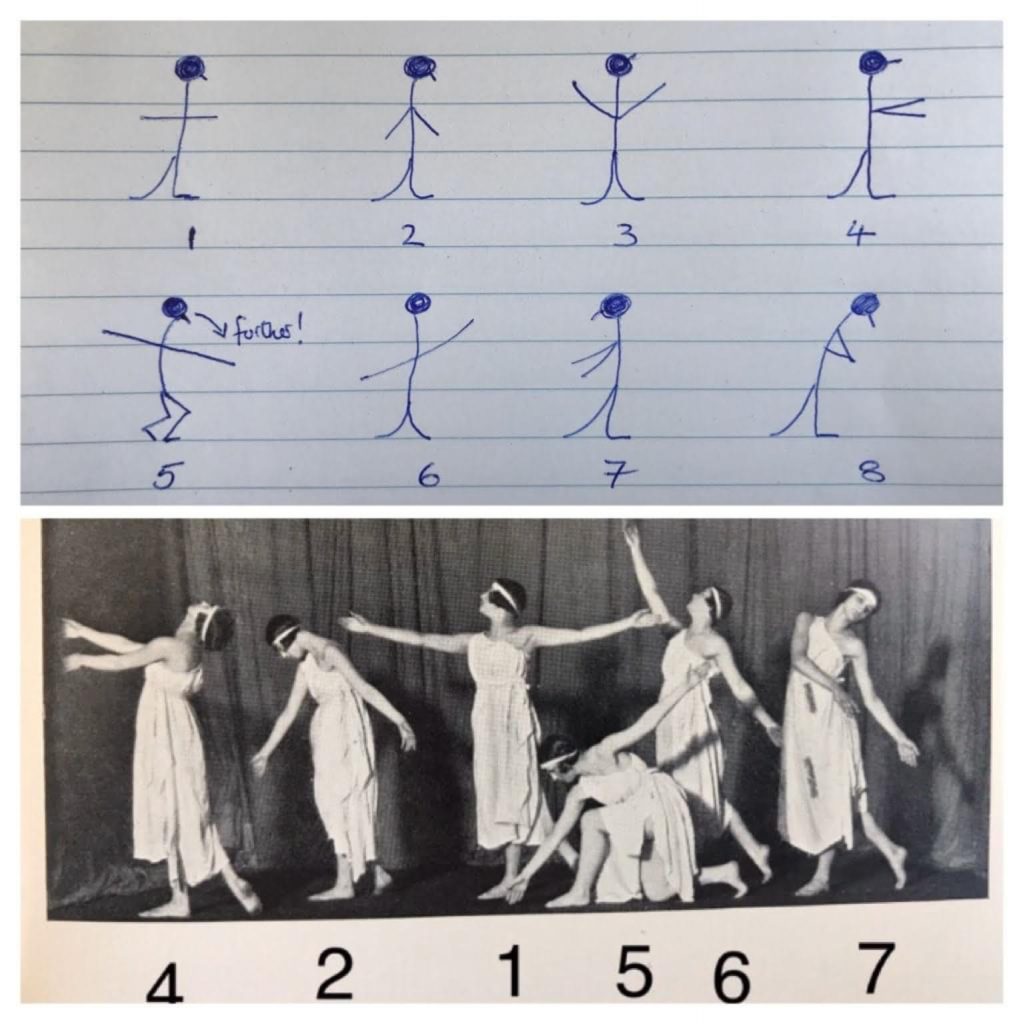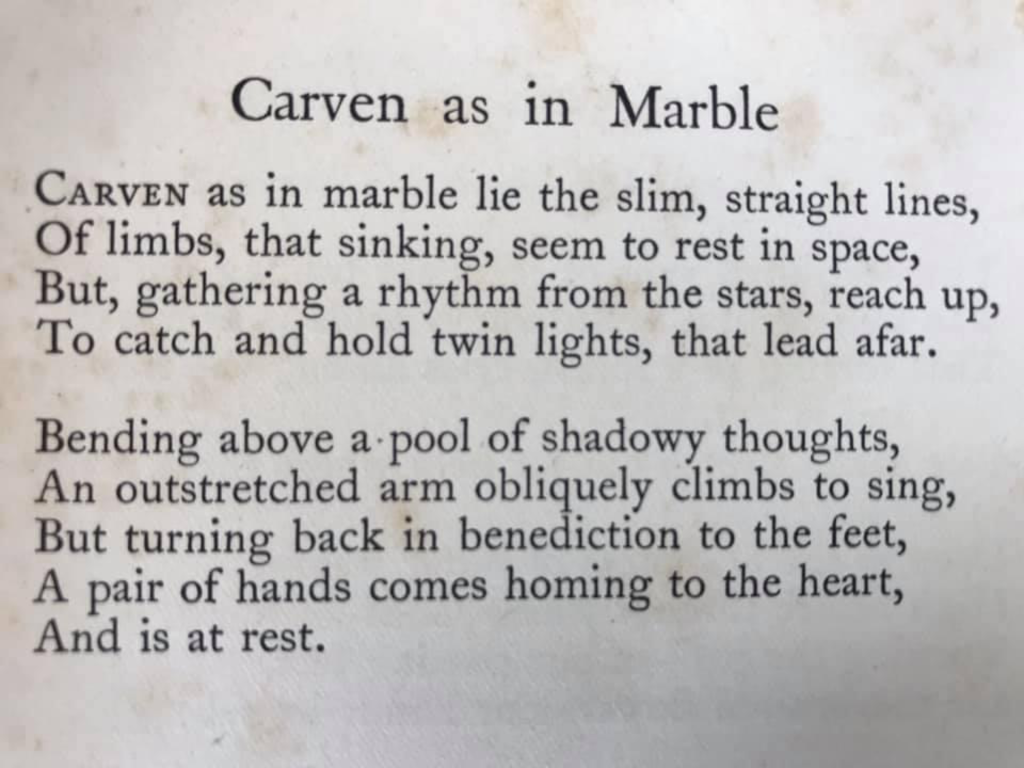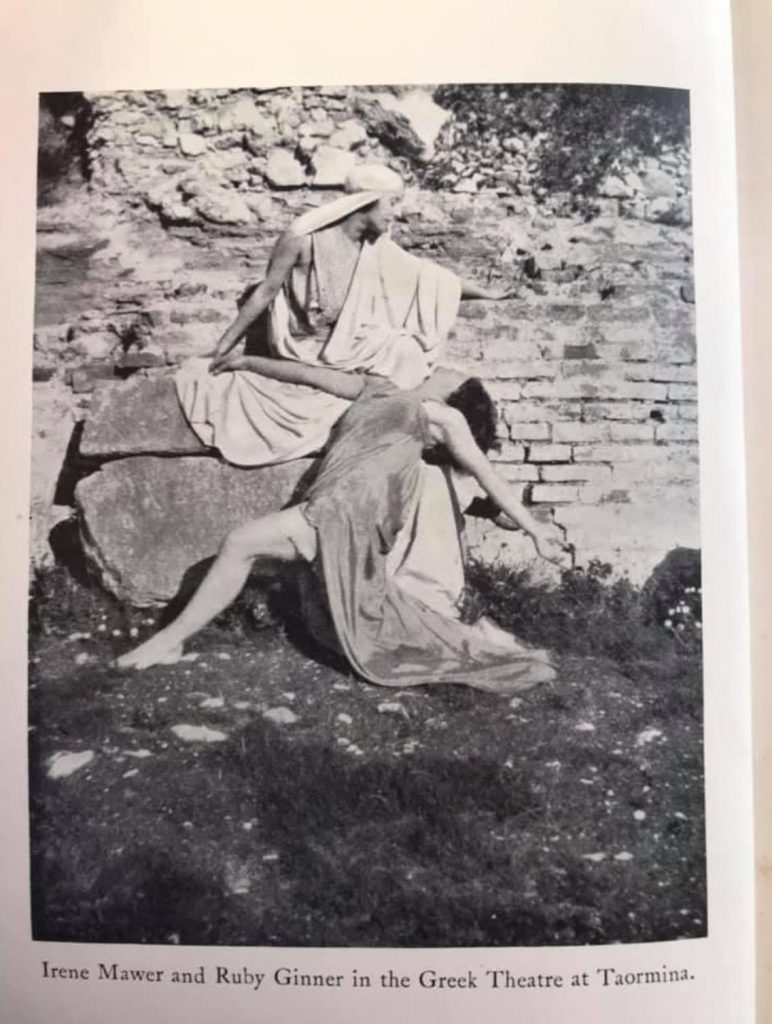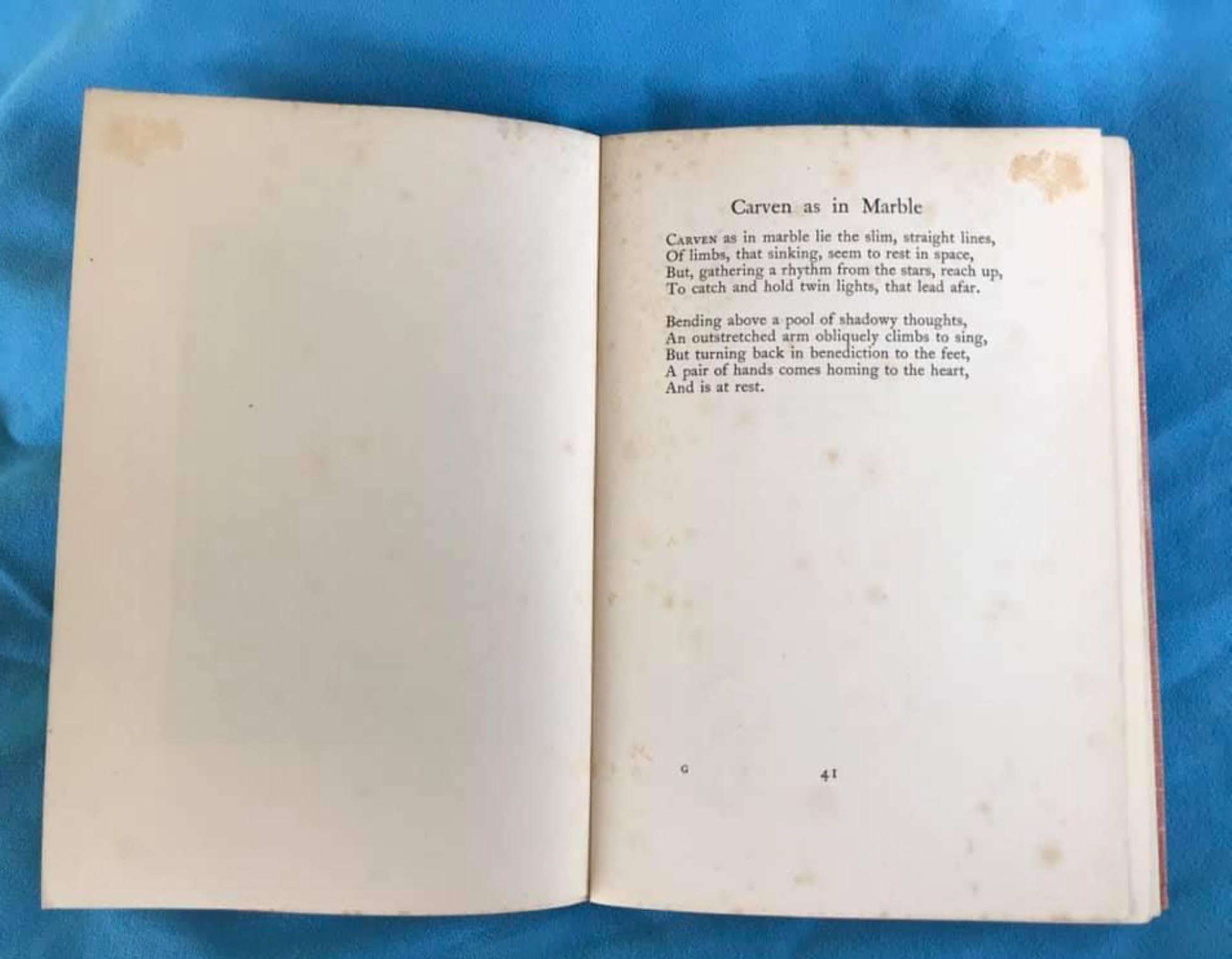CARVEN AS IN MARBLE
Mrs Durling (my teacher of the Irene Mawer Method of Mime and Movement) loved this poem which was written by Irene Mawer and through Mrs Durling, I came to love it as well.
One day I hope to find out Mrs Durling’s history and how she came to train under Ruby Ginner and Irene Mawer. I wonder why Nora Durling liked this poem above all others? I think it is because of the ‘frieze lines’, that is, a particular set of movements found in Classical Greek Dance.
I will copy out the poem here and put in the numbers 1 – 8 which are where I think each frieze line would go. By comparing my picture of the stick figures, together with the photograph of the real-life dancers, I hope you will be able to work out for yourself where each particular movement links in with the words.

Carven as in Marble
Carven as in marble lie the (1) slim, straight lines,
Of limbs, that (2) sinking, seem to rest in space,
But, gathering a rhythm from the stars, (3) reach up,
To catch and hold (4) twin lights, that lead afar.
(5) Bending above a pool of shadowy thoughts,
An outstretched arm (6) obliquely climbs to sing,
But (7) turning back in benediction to the feet,
A pair of hands comes (8) homing to the heart,
And is at rest.

Frieze lines are movements within Classical Greek Dance – to get an inkling of what I am describing try to imagine photos you have seen of Greek pottery showing figures in various profile positions. Then imagine those figures have come to life and are the dancers.
For people not familiar with Classical Greek Dance, images of women leaping like sprites through the air in flowing dresses and bare feet might be the mental picture that springs to mind. However, don’t be fooled! The dances can also depict strong war-like movements, or the hedonistic bacchanalia of wine and over-the-top partying. The Greeks lived normal lives of joy, sorrow, love, lust, war and peace: and all of that can be portrayed in rhythmic movement.
I learned the set of eight frieze lines from Mrs Durling, but it was 40 years ago and I could not describe them to you in any great detail now. They are recorded in Ruby Ginner’s important book “The Revived Greek Dance” and Ann Cornford wrote to me to remind me about them. Ann trained in Classical Greek Dance under Ruby Ginner herself, and still owns her original copy of “The Revived Greek Dance”.
Ann Cornford (a pupil of the Ginner-Mawer School in the 1940s) tells me that Alec Dyer, husband of Ruby Ginner, drew stick figures which were published in the book to describe the body position for each of the eight frieze lines (please see photo of stick figures copied by me!) and each frieze line can be performed to Irene Mawer’s poem “Carven as in Marble” in sequential order.

No! ‘Performed’ is the wrong word. Which word do I need, I can’t quite find it? To ‘perform’ the frieze lines does not even begin to adequately describe how it feels to move one’s body through a set of motions in line with the words.
For myself, I remember that when the movements are performed in a gentle manner, a sort of ‘meditative’ state sets in… a feeling of calmness, and of ‘oneness’. It sounds crass and pretentious to say it gives a feeling of being at one with the universe – but I did have a feeling along those lines; a sense of belonging to something much bigger than oneself.
However, the frieze lines can also express any emotion, for example, anger. When portraying anger, movements can be slow, with a tense unfolding of body and limbs, fists clenched. Or to express joy, the dancer would have open hands which might sometimes be turned upwards.
‘Performing’ is absolutely the wrong word – ‘using movement to express feelings’ would be a more correct but rather clumsy way of trying to get nearer to what the frieze lines are all about. The student of the Revived Greek Dance would study the reasons behind all of the movements in much greater detail than my inadequate words have tried to deal with here. Please do write in the comments section if you are able to more clearly able to explain what frieze lines are.
In Mrs Durling’s tiny Yorkshire kitchen, she would teach me Classical Greek Dance. I never took any exams in it, and only touched on the bare bones of it – but I am a direct descendent, the grand-daughter if you will, of the love and reverence felt by Irene Mawer and Ruby Ginner. Reverence which passed to Mrs Durling, passed to me. I don’t have anyone to pass it on to, but I hope that by recording it here it will go some way to forging another link in the chain. Perhaps someone will read this and be inspired to explore ‘the Greek’ and find for themselves ‘the glory that was Greece’.
Please do comment if you know about frieze lines, so I can be sure my interpretation is correct.
Please follow/comment/like/share as this will help the search engines to find Miss Mawer when people look on the Web for information about mime.

